Ontario's Historical Plaques
at ontarioplaques.com
Learn a little Ontario history as told through its plaques
Sir John Alexander Macdonald 1815-1891
Earnscliffe
John A. Macdonald in Hallowell
and
Sir John A. Macdonald 1815-1891
There are seven plaques about Sir John on this page.
The first three are in the County of Frontenac.
The fourth is in the County of Lennox & Addington.
The fifth is in the City of Ottawa.
The sixth is in Prince Edward County.
The seventh is in the City of Glasgow, Scotland.
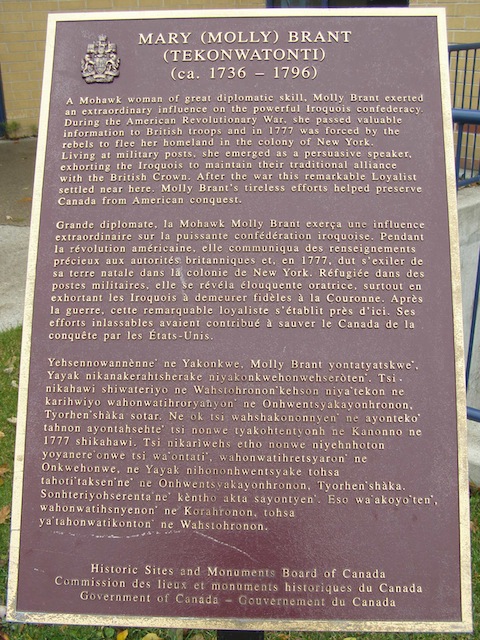
Photos by Alan L Brown - Posted July, 2009
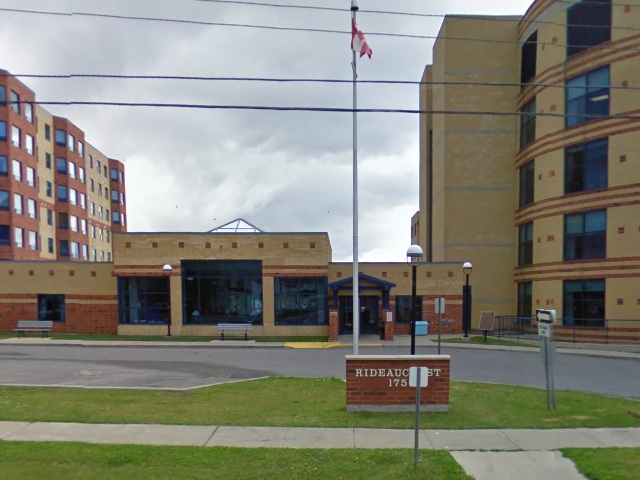
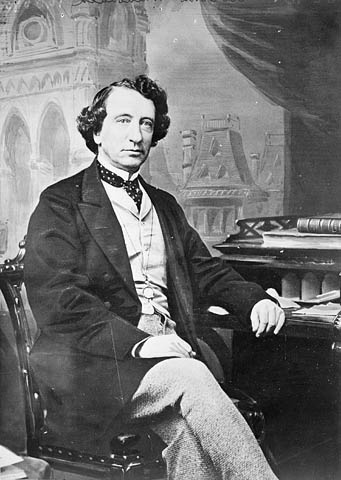
Photo Source - Wikipedia
Plaque Location
The County of Frontenac
The City of Kingston
In a park on the northwest corner of
King Street East and West Street
Coordinates: N 44 13.499 W 76 29.206 |
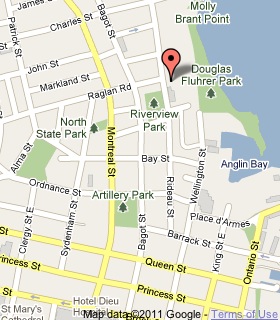 |
Plaque Text
First elected from Kingston to the Legislative Assembly of the Province of Canada in 1844, he was for forty-seven years a leading figure in the public life of his country. One of the Fathers of Confederation, he became the first prime minister of Canada and held the office 1867-73; 1878-91. Under his leadership the new Dominion was extended from sea to sea by incorporation of the territories of the Hudson's Bay Company, British Columbia and Prince Edward Island, and linked together by construction of the Intercolonial and Canadian Pacific Railways.
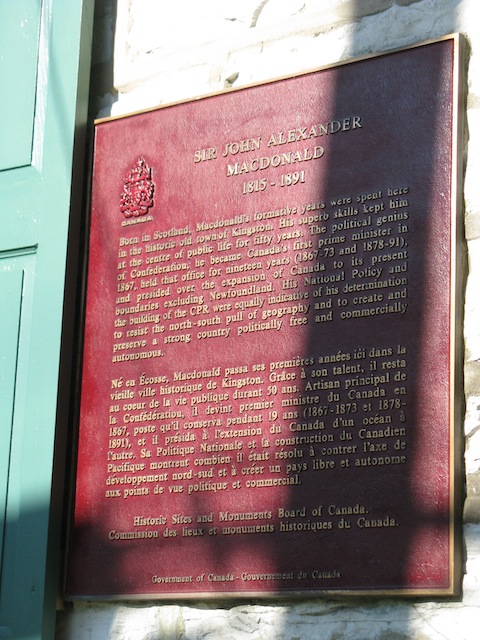
Photos by contributor Rick Mason - Posted August, 2010
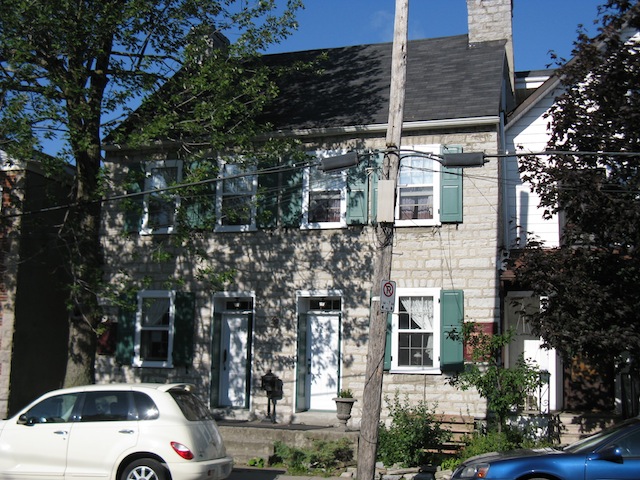
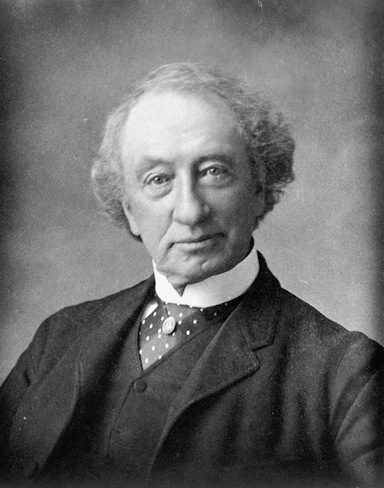
Photo Source - Wikipedia
Plaque Location
The County of Frontenac
The City of Kingston
On the outside wall of this house at 112 Rideau Street
(right side of the photo)
Coordinates: N 44 14.201 W 76 28.957 |
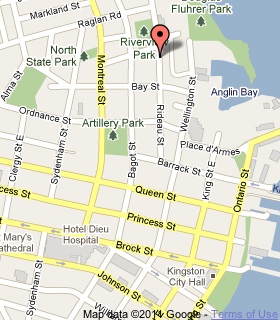 |
Plaque Text
Born in Scotland, Macdonald's formative years were spent here in the historic old town of Kingston. His superb skills kept him at the centre of public life for fifty years. The political genius of Confederation, he became Canada's first prime minister in 1867, held that office for nineteen years (1867-73 and 1878-91), and presided over the expansion of Canada to its present boundaries excluding Newfoundland. His National Policy and the building of the CPR were equally indicative of his determination to resist the north-south pull of geography and to create and preserve a strong country politically free and commercially autonomous.
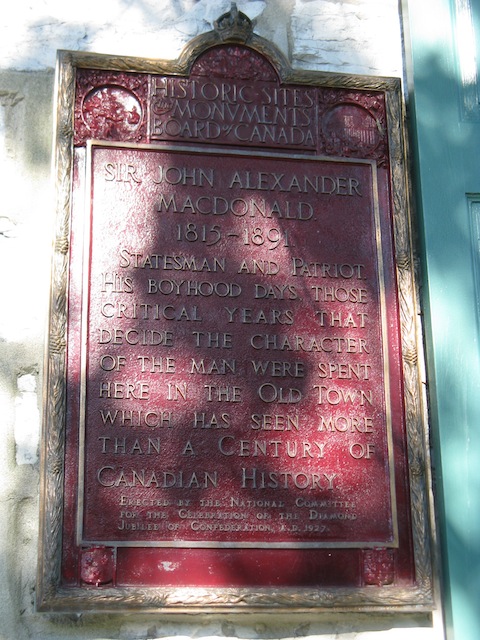
Photos by contributor Rick Mason - Posted August, 2010

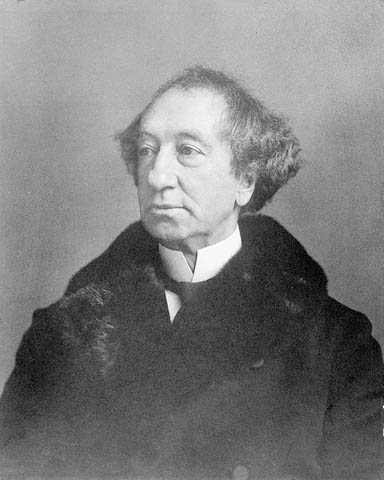
Photo Source - Wikipedia
Plaque Location
The County of Frontenac
The City of Kingston
On the outside wall of this house at 110 Rideau Street
(left side of the photo)
Plaque Text
Statesman and Patriot. His boyhood days, those critical years that decide the character of the man, were spent here in the Old Town which has seen more than a Century of Canadian History.
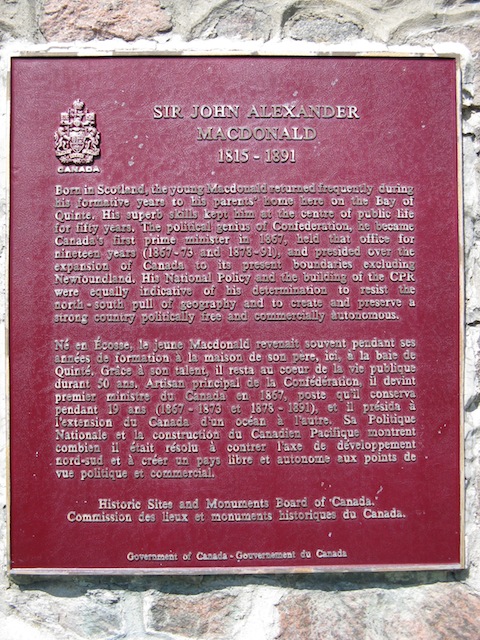
Photos by contributor Wayne Adam - Posted December, 2009
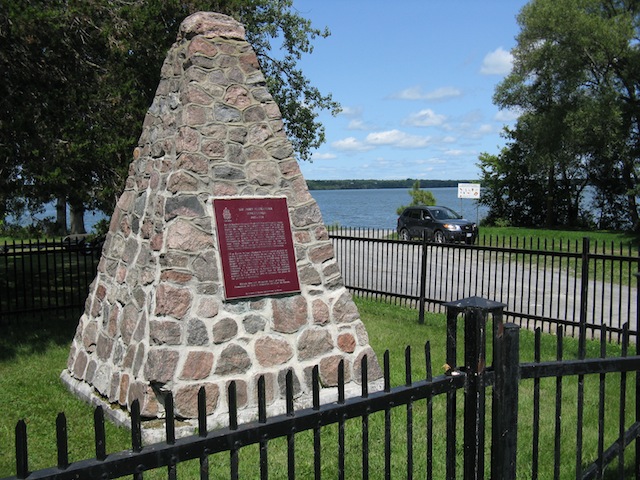
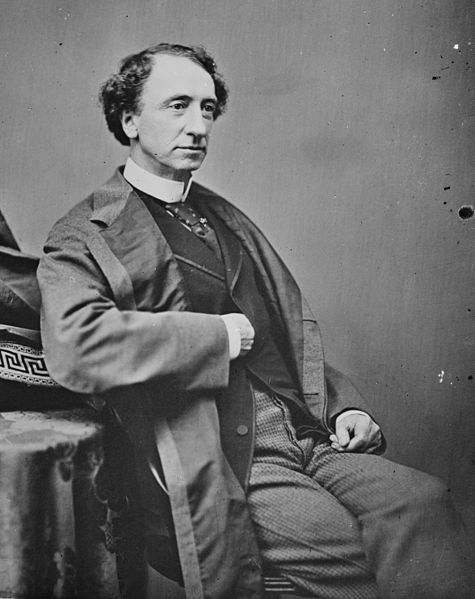
Photo Source - Wikimedia Commons
Plaque Location
The County of Lennox & Addington
The Town of Greater Napanee
At the Hay Bay Boat Ramp, north side of Shore Road
.2 km west of Hay Bay Church
Coordinates: N 44 06.072 W 77 01.324 |
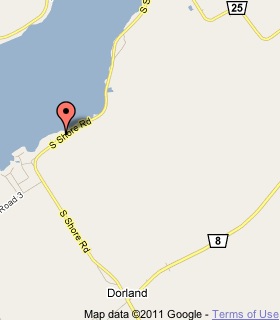 |
Plaque Text
Born in Scotland, the young Macdonald returned frequently during his formative years to his parents' home here on the Bay of Quinte. His superb skills kept him at the centre of public life for fifty years. The political genius of Confederation, he became Canada's first prime minister in 1867, held that office for nineteen years (1867-73 and 1878-91), and presided over the expansion of Canada to its present boundaries excluding Newfoundland. His National Policy and the building of the CPR were equally indicative of his determination to resist the north-south pull of geography and to create and preserve a strong country politically free and commercially autonomous.
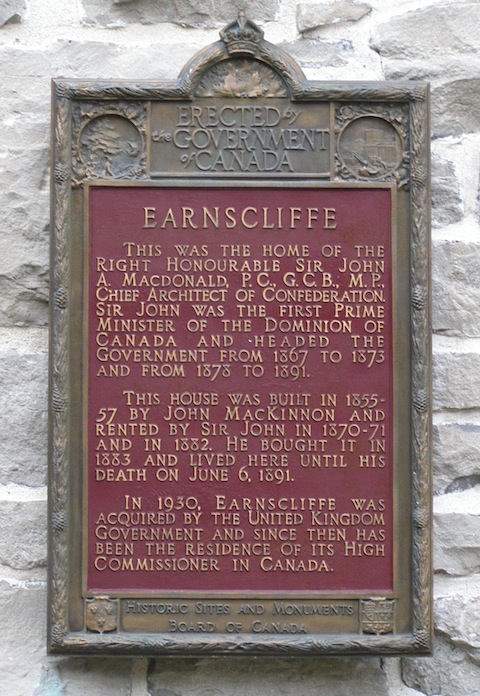
Photos by contributor Colin Old - Posted October, 2009
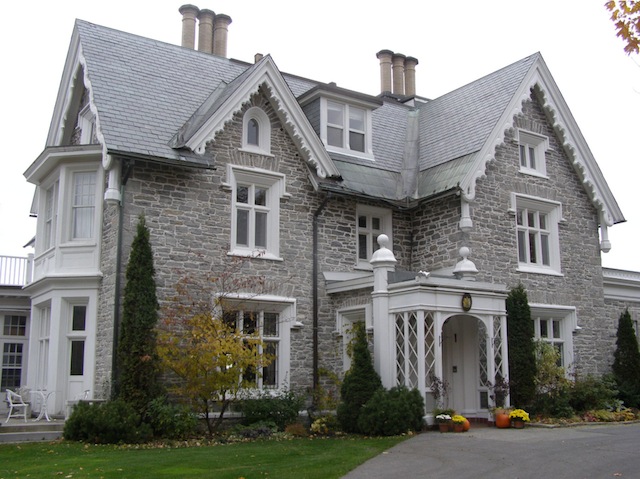
Plaque Location
The City of Ottawa
At 140 Sussex Drive, just east of the Macdonald Cartier Bridge
Coordinates: N 45 26.251 W 75 41.936 |
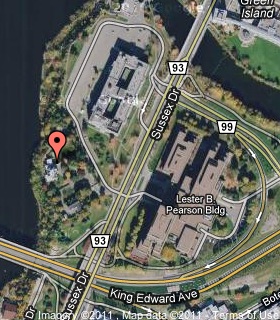 |
Plaque Text
This was the home of the Right Honourable Sir John A. Macdonald, P.C., G.C.B., M.P., Chief Architect of Confederation. Sir John was the first Prime Minister of the Dominion of Canada and headed the government from 1867 to 1873 and from 1878 to 1891. This house was built in 1855-57 by John MacKinnon and rented by Sir John in 1870-71 and in 1882. He bought it in 1883 and lived here until his death on June 6, 1891.
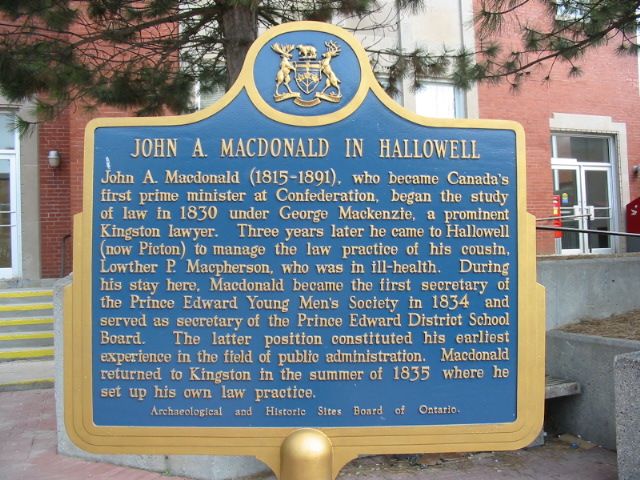
Photo by Alan L Brown - Posted December, 2010
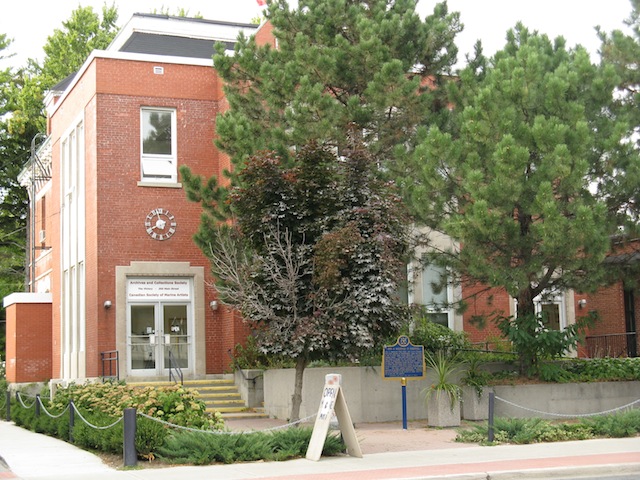
Photo by contributor Wayne Adam - Posted November, 2010
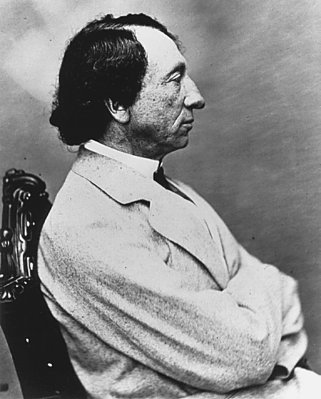
Photo Source - Canadian Heritage Gallery
Plaque Location
The County of Prince Edward
In Picton, on the north side of Main Street West
between Ross Street and Elizabeth Street
Coordinates: N 44 00.449 W 77 08.511 |
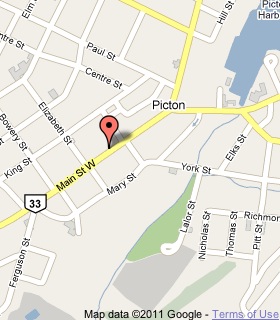 |
Plaque Text
John A. Macdonald (1815-1891), who became Canada's first prime minister at Confederation, began the study of law in 1830 under George Mackenzie, a prominent Kingston lawyer. Three years later he came to Hallowell (now Picton) to manage the law practice of his cousin, Lowther P. Macpherson, who was in ill-health. During his stay here, Macdonald became the first secretary of the Prince Edward Young Men's Society in 1834 and served as secretary of the Prince Edward District School Board. The latter position constituted his earliest experience in the field of public administration. Macdonald returned to Kingston in the summer of 1835 where he set up his own law practice.
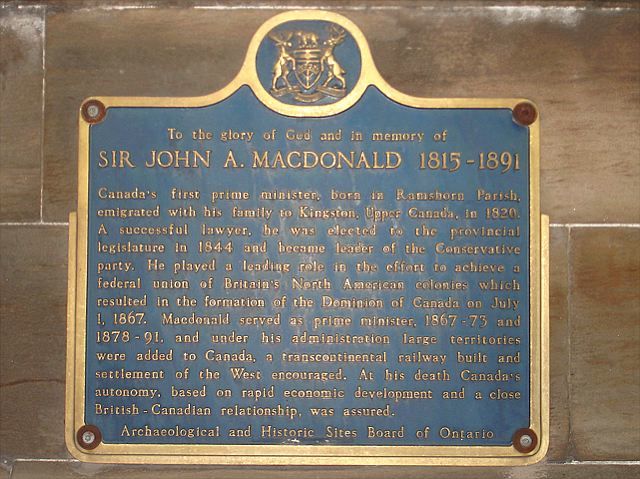
Photo by contributor Chris Porter - December, 2005
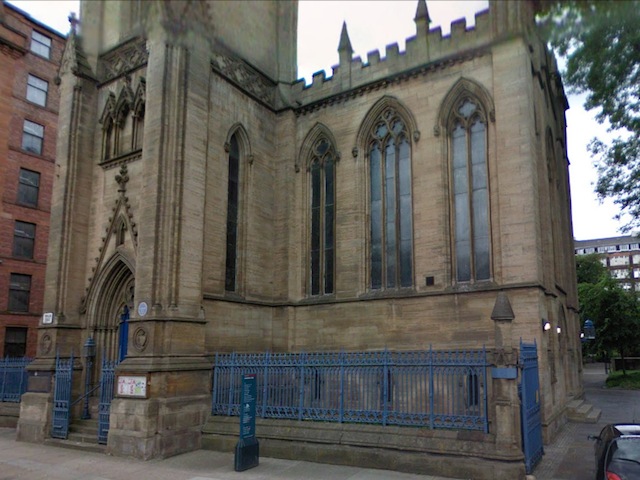
Photo from Google Street View ©2011 Google - Posted January, 2011
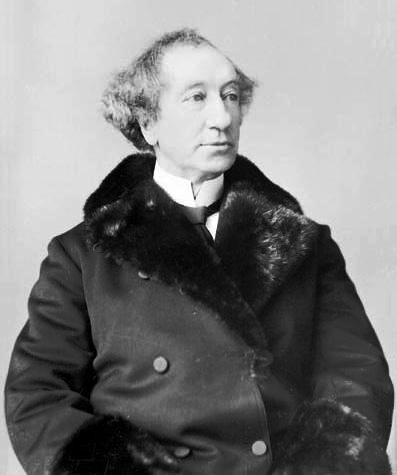
Photo Source - Wikimedia Commons
Plaque Location
Scotland
The City of Glasgow
At Ramshorn Theatre at 98 Ingram Street
Coordinates: N 55 51.576 W 04 14.706 |
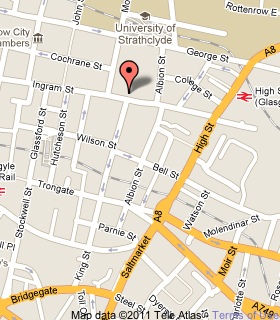 |
Plaque Text
Canada's first prime minister, born in Ramshorn Parish, emigrated with his family to Kingston, Upper Canada, in 1820. A successful lawyer, he was elected to the provincial legislature in 1844 and became leader of the Conservative party. He played a leading role in the effort to achieve a federal union of Britain's North American colonies which resulted in the formation of the Dominion of Canada on July 1, 1867. Macdonald served as prime minister, 1867-73 and 1878-91, and under his administration large territories were added to Canada, a transcontinental railway built and settlement of the west encouraged.At his death Canada's autonomy, based on rapid economic development and a close British-Canadian relationship, was assured.
Related Ontario plaque
Bellevue
Related Toronto plaques
Sir John A. Macdonald 1815-1891
The Macdonald-Mowat House
More
Information
More
Politicians
Here are the visitors' comments for this page.
Write a comment here.
Posted October 25, 2011
The Town of Greater Napanee plaque to Macdonald's boyhood home originated with local resident Arthur Ross Davis, who owned the land and had written to officials (including four Prime Ministers) over a period of two decades. In 1926, the national Historic Sites and Monuments Board (HSMB) rejected the idea. Davis responded by suggesting to Mackenzie King that both Macdonald and Laurier be honored at their boyhood homes. Within 10 days, another body, the National Committee for the Celebration of the Diamond Jubilee of Confederation, embraced the idea.
The committee won support of the HSMB to write the inscription for a plaque, even though the latter had rejected the idea of marking Macdonald's boyhood home only a year earlier. The original proposed text read:
"Sir John A. Macdonald, whose boyhood days, those critical years that
decide the character of the man, were spent here where loyalists had
carved new homes out of the wilderness. From this soil he drew the
inspiration to weld together the weak and scattered colonies of his day
into a strong and ambitious dominion, equal partner in the far-flung
British Commonwealth."
One researcher, Yves Pelletier, says the unknown author "highlights the continuing loyalist myth present in Ontario during the earlier decades of the twentieth century", and a "repetitive imperial commemoration of Canadian history which governed much of the HSMB activities between 1919 and 1950."
The text was shortened to: "Sir John Alexander Macdonald From this soil, home of the Loyalists, he drew inspiration to weld together the weak and scattered colonies of his day into a strong and ambitious Dominion, equal partner in the far-flung British Commonwealth".
The committee had allotted funds to pay for such plaques, and although its form followed traditional HSMB markers, with an elaborate illustrated frame containing the HSMB name, it identified the committee as being the body responsible for it. Despite the plaque, the site was not deemed a national historic site by the HSMB, an attempt to put further distance between the two bodies. (A rare example of such a marker in its original form can be seen in Kingston at 110 Rideau Street [see the third plaque on the page "Sir John Alexander Macdonald 1815-1891" on this website].)
This Adolphustown plaque was unveiled in 1927, but by 1980 was replaced with the current plaque for "reasons unknown". The current text redefines the public image of Macdonald yet again.
-Wayne
Reference: Yves Y. Pelletier, "The Old Chieftain's New Image: Shaping the Public Memory of Sir John A. Macdonald in Ontario and Quebec, 1891-1967", doctoral thesis, Queen's University, Kingston, 2010.
Posted October 7, 2010
The two plaques on the house at 112 Rideau Street in Kingston are fascinating. They don't appear to be on any National Historic Sites and Monuments Board list that I've seen. This one in particular is unique, in my experience, for its signature: "Erected by the National Committee for the Celebration of the Diamond Jubilee of Confederation, A.D. 1927." I've never seen a federal plaque with that notation. Perhaps there are others. -Wayne
Posted January 8, 2010
The Ottawa plaque is a welcome addition to the website. Being attached to the residence of an ambassador, it's behind a security gate, and not open to the public. Years ago, I requested access, impromptu, and was met with an apologetic ambassadorial spouse who was just about to run an errand in her Land Rover and couldn't let me in. I wasn't in town long enough for another attempt. So congratulations Colin, and thanks. I'd love to see it for myself one day.
-Wayne
Here's where you can write a comment for this page.
Note: If you wish to ask me a question, please use the email link in the menu.
Note: Comments are moderated. Yours will appear on this page within 24 hours
(usually much sooner).